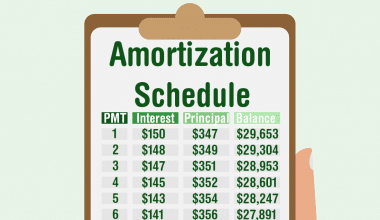Calculating the number of employees in your company and their work hours is of utmost importance for financial planning, managing employee benefits, and complying with legal regulations. Therefore, the mystical full-time equivalent (FTE) is a metric that reveals the overall number of full-time workers within an entire organization. Join us on a journey of discovery as we unravel the mysteries of the full-time equivalent employee and how to calculate it.
What Is Full Time Equivalent?
Imagine a world where every person is a unit of measurement. That’s what full-time equivalent (FTE) is all about. It’s a way to quantify the amount of work or school one person can accomplish in a day. This measurement is used in many different settings to help keep track of productivity and progress. The concept of full-time equivalents is commonly used to gauge the presence and productivity of an individual, be it an employee or a student, and to assess the extent of their responsibilities.
FTE, an acronym for Full-Time equivalent, is a metric that gauges the total number of full-time employees operating within an organization. Imagine a magical formula that transforms the hours of full-time, part-time, and other employees into a tangible unit of measurement known as “full-time.” In essence, the FTE represents the quantification of full-time roles that an organization has determined to be necessary. This nifty tool helps tally up staff members based on their level of employment.
As a fundamental benchmark in personnel management, it stands out as a paramount metric for businesses. Thanks to the advancements in the part-time industry, utilizing this ratio will provide you with a clearer and more manageable approach to staff planning. In the present era, gauging the productivity of your staff has become a breeze with the Full-Time Equivalent. This nifty tool enables you to take into account your entire workforce, be it full-time, part-time, or even those who grace your office with their presence for just one day a week.
What Does FTE 100% Mean?
When we say FTE 100%, we’re talking about someone who’s fully committed to the job, like a superhero who’s always ready to save the day. It’s like having a full-time employee, or someone who’s just as dedicated and hardworking as one. In the corporate world, full-time employment typically entails a 40-hour workweek, although certain organizations may employ alternative timeframes to define this status. One could alternatively depict this as having a 1.0 full-time equivalent magnitude.
Full Time Equivalent Calculation
The formula for fulltime equivalent calculation is as follows:
Full-Time Equivalent (FTE) = Total Hours Worked by Part-Time and Full-Time Employees ÷ Number of Available Full-Time Hours in a Year
Let us delve into the intricacies of an average, full-time worker’s annual schedule. We shall assume that the diligent worker adheres to a standard 8-hour workday and dutifully puts in their time for five days each week.
8 hours per day x 5 days weekly= 40 hours
Then, multiply that by the average number of weeks in a year that you work:
40 hours weekly x 52 weeks= 2,080 hours
Lastly, this is the typical approach of a corporation to determining the annual timescale of hours worked by a full-time employee.
How to Calculate Full-Time Equivalent
The concept of full-time equivalents (FTEs) has become a staple in modern workplaces. FTEs are a popular tool among companies to gauge their workforce’s capacity, to calculate the full time equivalent number of hours labored by full-time employees through a combination of part-time employees and their hours. The meticulous task of accounting serves as the backbone for determining adequate salaries and calculating the business’s expenses when compensating its diligent workforce. Every year, a company typically regards a Full-Time equivalent (FTE) as a precious asset worth 2,080 hours. Let us embark on a journey of exploration to uncover the intricacies of FTE calculation. Thus, to calculate Full-time equivalents yearly, follow the following steps listed below:
#1. Present the Roster of Your Employees and the Duration of Their Dedicated Labor
Create a comprehensive roster of all the diligent staff members who have received a W-2 form at the culmination of the fiscal year. Then subtract the sanctioned hours of leave, including remunerated time off and sick leave.
#2. Determine the Number of Hours That Qualify as a Complete Tour of Duty
Enterprises typically delineate their full-time timetable by the utmost allowable hours, which amounts to 40 hours weekly. That is to say, if an employee works fewer than 40 hours per week, they shall be deemed a part-time employee in this scenario. Also, if a company chooses to define a full-time role as 30 hours, any schedule that falls short of this threshold would be classified as part-time.
#3. Determine the Total Number of Hours Worked in a Year
Determine the number of hours worked by both full-time and part-time employees over a year. Harness the power of mathematics by multiplying the number of weeks in a year with the total number of hours allocated for a full-time position.
#4. Add up the Annual Hours Dedicated by Both the Full-Time and Part-Time Employees
Calculate the combined hours of the diligent full-time staff and the hardworking part-time crew.
#5. Determine the Fractional Full Time Equivalent for Part-Time Work
To uncover the elusive part-time FTE, simply divide the aggregate hours clocked in by the part-time staff by the annual hours put in by their full-time counterparts.
#6. Calculate the Total Numbers and Determine Your Full-Time Equivalent
Integrate the Full time equivalent of your part-time role with that of your full-time role. Hence, to uncover the full-time equivalent worth of a particular role, just divide the total hours worked by the hours deemed as full-time.
So, if 40 hours is the standard for a full-time job, then a person who works 35 hours would be thought to be working 0.875% of a full-time job. Also, a diligent individual who dedicates 30 hours of their time to work holds a 0.75 full-time equivalent status.
The Benefits of Determining Full time Equivalent
In the realm of business, particularly for those with a sizable contingent of part-time staff, the conversion of worked hours into FTEs is a crucial exercise. This lets the company figure out how many full-time workers it would take to make up for the hours spent by the part-time workers.
Ultimately, a company must ascertain the number of FTEs, as it enables them to gauge the efficiency and value of their part-time staff, taking into account the workload they handle. Furthermore, it is worth noting that part-time employees typically receive lower compensation and are not entitled to the same benefits as their full-time counterparts. The culmination of the aforementioned elements ultimately results in a financial toll on the company and impacts its overall profitability. Hence, to summarize, we have compiled a general overview of the benefits of determining FTE.
#1. Budgeting
FTEs help plan a budget. Managers and executives use this number to figure out how much labor will cost and when it will be due for a given project or task. Meanwhile, this data is used by finance teams for things like revenue and profit per employee projections and budgeting.
#2. Figure Out the Workload
FTEs are useful for determining the optimal amount of full- and part-time employees, as well as their appropriate work schedules. Because schedules and funding for part-time workers are often in flux, this is helpful information to have on hand when calculating staff production.
#3. Enables in Decisions-Making
The full-time equivalent can also be used to compare the financial benefits of hiring a full-time worker to those of a part-time worker. Organizations can use FTE to determine the pro-rata wage for part-time workers.
What Is a Full-Time Equivalent Employee?
The amount of time spent on the job, not the number of employees at the company, determines whether or not someone is a full-time worker.
- A solitary laborer working a standard 40-hour week is equivalent to a single full-time employee in terms of hours worked.
- When two diligent part-time employees or students work with utmost dedication for exactly half of the company’s official full-time schedule, they together form a single full-time equivalent employee.
- A team of diligent part-time workers, each dedicating a quarter of the official full-time schedule to their tasks. Together, they harmonize their efforts to produce the same output as a single full-time employee. This is the magic of one full-time equivalent employee.
How Do You Calculate the FTE Salary in the UK?
Unraveling the full-time equivalent for the existing full-time staff is a matter of conducting a headcount. Hence, to determine the full-time equivalent of part-time employees, simply sum up their work hours and divide the result by 120.
What Is a FTE Salary?
The FTE factor becomes a crucial element in determining an employee’s salary, especially when they work part-time or full-time. The remuneration for this role is tailored to a full-time commitment. Hence, by utilizing the FTE, one can accurately calculate the compensation for an employee who works part-time. Imagine a world where a full-time employee earns a whopping $100,000! Now, let’s say someone works in that same role but only puts in 20 hours per week. That would equate to 0.5 FTE and a salary of $50,000. Not too shabby for part-time work, right? For a diligent worker putting in 30 hours, which equates to a 0.75 FTE value, the compensation would amount to $75,000.
How Do You Calculate FTE per Month?
To calculate the full-time equivalent for a month, simply divide the total number of hours by 173.33. That’s right, just divide 2,080 hours by 12 months and you’ll have your answer! Also, if you’re wondering how to measure a full-time day, simply divide the total number of hours by 8, and voila! You’ll have your answer.
How is FTE Cost Calculated?
To calculate the cost of FTEs (full-time equivalents), which HR managers employ to ascertain the number of full-time employees in their organization. To arrive at this number, combine the total number of hours worked by all employees, regardless of their employment status, and then divide it by the standard number of hours that a full-time employee would work during a specific timeframe.
What Is the Difference Between FTE and Headcount?
The headcount of a company is the total of all the hardworking individuals who contribute to its success, whether they work part-time or full-time. In the realm of headcount, every soul has deemed a single entity, irrespective of the duration of their toil. However, when we talk about FTE, we’re essentially discussing the magical number of hours that constitute a full-time workload. Imagine a company that deems 40 hours as the threshold for full-time employment. Now, let’s say two diligent employees work 20 hours each week. In this case, these two individuals would collectively be considered as one full-time equivalent (FTE) employee.
What Is the FTE Value of 30 Hours?
In the realm of standard 40-hour workweeks, an individual who dedicates 30 hours to their craft holds an FTE value of 0.75. Consider the astonishing calculation obtained by dividing 30 hours by 40 hours, yielding the mysterious number of 0.75. So, if you choose an unusual number of hours for full-time employment, simply divide 30 by that number to get the FTE value.
Over to You
The adaptive FTE can be put to use in a variety of ways, with a range of calculation methods at your disposal, depending on your desired outcome. Hence, with this tool, you can strategize your project, establish timelines, and calculate your finances.
Furthermore, possessing precise FTEs for each staff member can aid employers in discerning their obligations to their workforce, vacation accruals, and whether their enterprise qualifies for specific federal initiatives. Once you’ve determined your purpose for utilizing FTE, pinpoint the fitting computation technique, and carry it out with precision.
References
- corporatefinanceinstitute.com
- forbes.com
- peoplehum.com
- indeed.com
- clockify.me
- personio.com
Related Articles
- How Many Working Hours in a Year: How to Calculate, Stressfree!!!
- PART-TIME EMPLOYMENT: Meaning, Rights, Insurance, Difference & Benefits
- How Many Hours Is Part-Time Work: Benefits and Job Options
- PART-TIME JOBS: Meaning, Remote & Jobs With No Experience.
- Part-time Work Hours: Best US Practices
- EMPLOYEE POACHING: What It Means, Laws & Examples






